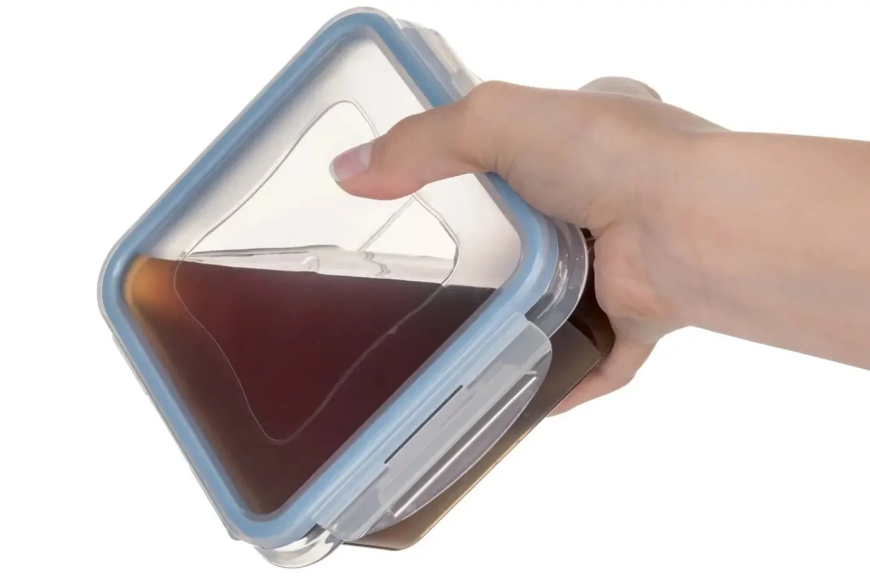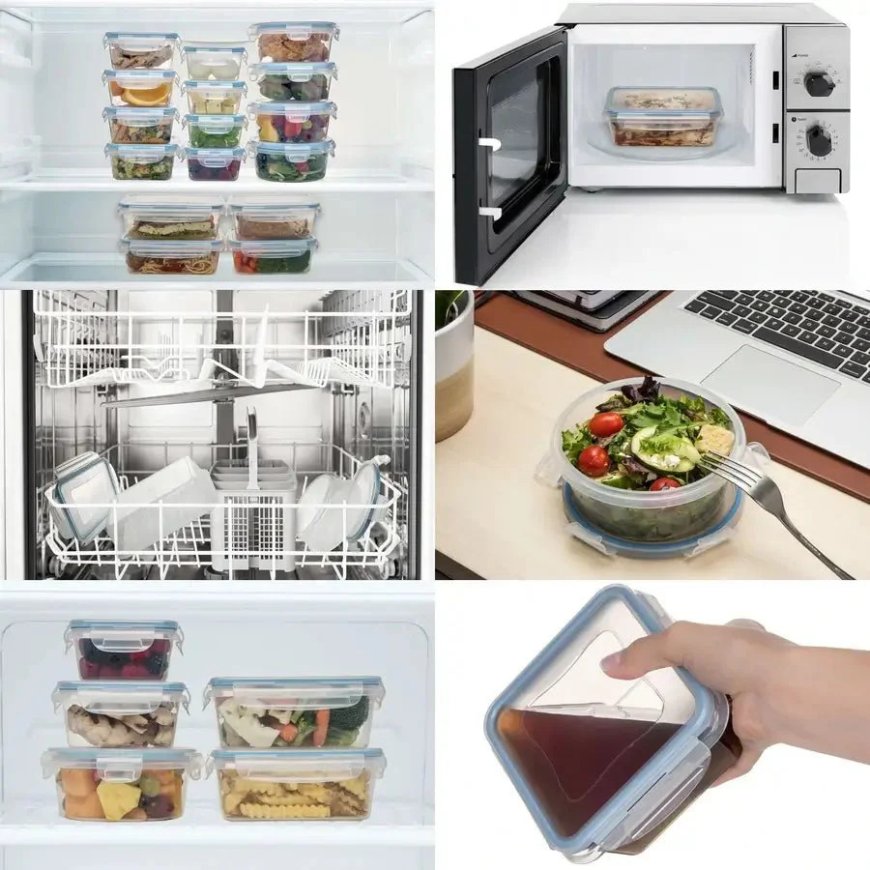Leak-Proof Meal Prep Containers by Shazo
Introduction
Are you tired of opening your lunch bag only to find a mess from a leaked container? We’ve all been there, and it’s frustrating. But it doesn’t have to be this way. Leak-proof meal prep containers are designed to keep your food secure, fresh, and contained, no matter where you take them. Whether you're meal prepping for the week, packing lunch for work, or storing leftovers, having reliable, leak-proof containers is essential. In this article, we’ll dive into everything you need to know about leak-proof meal prep containers, from why they matter to how to choose the right ones for your needs.
Why Leak-Proof Meal Prep Containers Matter
The Importance of Freshness
Keeping your food fresh is a priority for everyone who meal preps. Leak-proof containers ensure that your meals stay fresh by maintaining a tight seal that keeps air out. This is especially important for foods that can easily spoil or dry out. A well-sealed container locks in moisture and flavors, ensuring that your meals taste just as good on day three as they did when you first prepped them.
Preventing Spills and Wasted Food
Nobody likes cleaning up spills, especially when it’s a result of a container failing to do its job. Leak-proof containers are specifically designed to prevent this. They are built to withstand the jostling and movement that comes with transporting food, ensuring that even the most liquid-heavy meals stay secure. This means no more wasted food or frustrating clean-ups!
Key Features of Leak-Proof Containers
Durable Seals
Silicone Gaskets
One of the most important components of a leak-proof container is the silicone gasket. This flexible seal fits snugly around the lid, creating a barrier that prevents liquids from escaping. Silicone is preferred for its durability and ability to maintain its shape even after repeated use and washing. It’s also resistant to high temperatures, making it perfect for containers that need to go from the fridge to the microwave.
Snap-Lock Lids
Snap-lock lids provide an extra layer of security. These lids clamp down on all sides of the container, ensuring a tight seal that doesn’t budge. The combination of a silicone gasket and a snap-lock lid makes for a container that is virtually leak-proof, giving you peace of mind when you’re on the go.
Sturdy Construction
Materials Used
The materials used in leak-proof containers are just as important as the seals. High-quality glass, BPA-free plastic, and stainless steel are the most common materials used. Glass is favored for its non-reactive properties, plastic for its lightweight nature, and stainless steel for its durability. Each material offers different benefits, so it’s important to choose one that suits your needs.
Design Considerations
A good leak-proof container isn’t just about the lid; it’s about the overall design. Look for containers with rounded edges to prevent food from getting trapped, and make sure the container is sturdy enough to hold up to daily use. Some containers also feature divided compartments, which are perfect for keeping different foods separate without mixing flavors.
Top Materials for Leak-Proof Containers
Glass Containers
Glass food storage containers are a popular choice for many because they are non-porous, which means they won’t absorb odors or stains. They’re also oven-safe, making them ideal for reheating meals. The downside? They’re heavier and more fragile than plastic or stainless steel. However, if you’re looking for something that’s durable and looks great, glass is the way to go.
Plastic Containers
Plastic containers are lightweight and less likely to break, making them a great option for those who need something more portable. Just be sure to choose BPA-free plastic to avoid any potential health risks. These containers are also usually more affordable, making them a budget-friendly choice for meal prep. However, they can stain and retain odors, so proper care is essential.
Stainless Steel Containers
If durability is your top concern, stainless steel containers are the best option. These containers are incredibly strong, resistant to impacts, and completely non-reactive. They’re also naturally leak-proof, as the material doesn’t flex or warp over time. The downside? They’re not microwave-safe, so you’ll need to transfer your food to another container for reheating.
How to Choose the Right Leak-Proof Container
Consider Your Storage Needs
Before choosing a leak-proof container, think about what you’ll be using it for. Are you meal prepping for the week? Do you need something for work lunches? The size and shape of the container will play a big role in how well it fits your needs. If you’re prepping meals in bulk, larger containers may be better, while smaller, more portable options are great for single meals.
Match Containers to Your Meals
Not all meals are created equal, and neither are containers. Think about the types of foods you’ll be storing. Soups and stews require a container with an excellent seal to prevent spills, while solid foods like salads might not need as tight a seal. Also, consider whether you’ll need compartments for separating different foods within the same container.
Portability and Convenience
If you’re constantly on the go, portability is key. Look for containers that are easy to carry and stackable for efficient storage. Features like snap-lock lids and durable seals are essential for keeping your food secure during transport. Additionally, consider the weight of the container—lighter materials like plastic may be more convenient for travel, while heavier glass containers might be better suited for at-home use.
Caring for Your Leak-Proof Containers
Proper Cleaning Techniques
Maintaining your leak-proof containers properly is crucial for ensuring their longevity and performance.
Dishwasher-Safe Options
Many leak-proof containers are dishwasher-safe, making cleaning them a breeze. However, it’s important to check the manufacturer’s instructions, as some containers may only be top-rack safe. Be cautious with high temperatures, as prolonged exposure to heat can degrade the seals over time.
Hand Washing Tips
For containers with delicate seals or those made from more sensitive materials, hand washing is recommended. Use warm, soapy water and a soft sponge to clean the container and lid thoroughly. Pay special attention to the gaskets and seals, as food particles can get trapped in these areas. Dry them completely before storing to prevent any moisture buildup that could lead to mold or odor retention.
Extending the Lifespan of Seals and Gaskets
The seals and gaskets in your leak-proof containers are essential for maintaining their leak-proof capabilities. To extend their lifespan, avoid using sharp utensils that could damage the gasket. Also, be mindful of how you store the lids—avoid placing heavy objects on top of them that could warp the seal. Regularly inspect the gaskets for any signs of wear and tear, and replace them if necessary to ensure continued performance.
Creative Uses for Leak-Proof Containers
Beyond Meal Prep: Versatility in the Kitchen
Leak-proof containers are not just for meal prep—they’re incredibly versatile and can be used for a variety of purposes in the kitchen. Use them to store homemade sauces, marinades, or dressings without worrying about leaks. They’re also great for organizing pantry staples like flour, sugar, or pasta, keeping everything fresh and easy to access.
Packing Liquid Foods
One of the best uses for leak-proof containers is packing liquid foods like soups, stews, or smoothies. The secure seals ensure that even the most liquid-heavy meals stay contained, making it easy to bring your favorite homemade dishes to work or school without the fear of spills.
On-the-Go Snacks and Lunches
Whether you’re packing a salad, a sandwich, or a fruit parfait, leak-proof containers are perfect for on-the-go snacks and lunches. Their durability and reliability make them a go-to choice for busy individuals who need to keep their meals fresh and secure throughout the day.
Conclusion
Leak-proof meal prep containers are a game-changer for anyone who values convenience, freshness, and security in their food storage. From the robust seals and sturdy materials to the thoughtful design features, these containers are built to prevent spills and keep your meals tasting great. Whether you’re prepping for the week, packing a lunch, or storing leftovers, investing in high-quality leak-proof containers is a decision you won’t regret. So, say goodbye to messy spills and hello to hassle-free meal prep!
FAQs
1. Are all leak-proof containers microwave-safe?
Not all leak-proof containers are microwave-safe. Glass containers usually are, but stainless steel is not. Always check the manufacturer’s instructions before microwaving.
2. How do I know if a container is truly leak-proof?
Look for containers with silicone gaskets and snap-lock lids. These features are indicators of a good seal that will prevent leaks.
3. Can I freeze food in leak-proof containers?
Yes, many leak-proof containers are freezer-safe. Just be sure to leave some room for expansion, especially with liquid foods.
4. How long do the seals on leak-proof containers last?
With proper care, the seals can last several years. Regular inspection and gentle cleaning can extend their lifespan.
5. What’s the best way to store leak-proof containers?
Store them with the lids off to prevent moisture buildup. Stack them carefully to avoid warping the seals.














